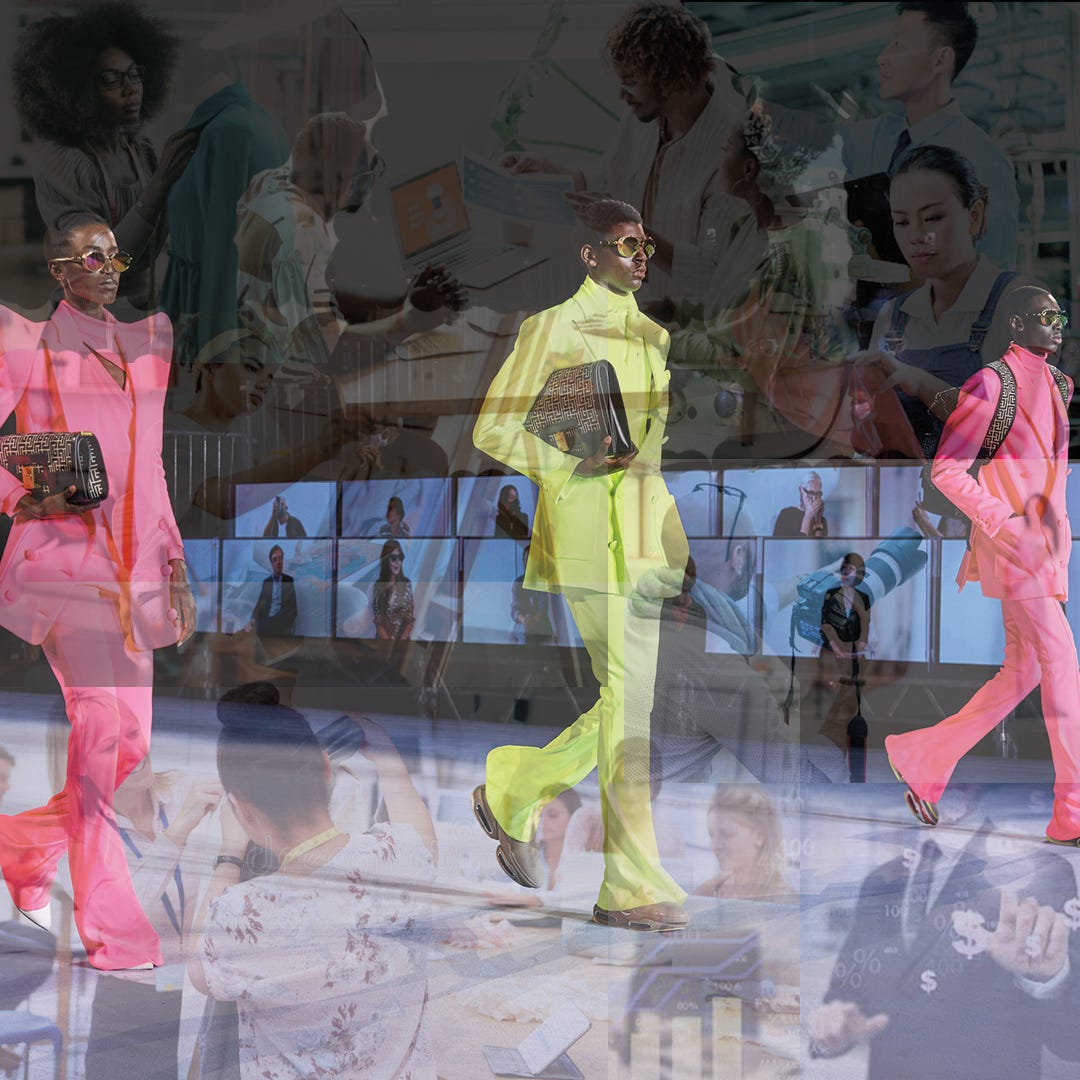The concept of a fashion industry ecosystem is quite fascinating because it shows just how intricate, diverse, and dependent systems can be, and how everything is seamlessly connected for survival. Like a biological one, this interconnectivity can be indirect or direct, with all parts playing a vital role.
Since botanist Arthur Tansley coined the term “ecosystem” in the 1930s, the concept has been used increasingly in the world of business as a model to build interconnected systems for greater success. The fashion industry ecosystem encompasses many niche areas and professions and actually spans multiple industries. Because I love a good visual, I created one to better illustrate this concept as I currently envision it.
The concept of a fashion industry ecosystem is a fascinating glimpse into the intricate web of interconnections that drive one of the world’s most dynamic industries. Much like a biological ecosystem, it thrives on the interdependence of diverse roles and sectors, each playing a vital role in ensuring the system’s health and sustainability.
The term "ecosystem," originally coined by botanist Arthur Tansley in the 1930s, has evolved beyond its ecological roots to become a powerful framework in the business world. In fashion, this metaphor aptly captures the myriad connections—direct and indirect—that make the industry a thriving network of creativity, commerce, and culture.
The Education Sector: Unsung Heroes of the Industry
Education forms the bedrock of the fashion ecosystem. Throughout my academic journey, I’ve been fortunate to learn from professors, mentors, and even informal guides whose insights shaped my career in ways I could never have anticipated. These educators are the unsung heroes, nurturing the next generation of designers, stylists, and thought leaders who will shape the future of fashion.
Every celebrated designer or renowned fashion talent owes a debt of gratitude to their “village” of educators. These professionals are not only gatekeepers of knowledge but also pivotal catalysts for innovation, ensuring the industry evolves with each new cohort of talent.
Designers: The Visionaries at the Core
At the heart of the ecosystem lie the designers—the visionaries who bring creativity to life. Designers are the architects of fashion, blending artistry, technical skill, and cultural insight to create pieces that resonate with audiences. From haute couture to streetwear, their work serves as the foundation upon which the entire industry builds.
Designers like Coco Chanel revolutionized the way we think about femininity and style, while contemporaries like Virgil Abloh redefined the boundaries between fashion and street culture. By constantly innovating and responding to societal shifts, designers inspire the entire ecosystem, from manufacturers to marketers, ensuring the industry remains vibrant, relevant, and ever-evolving.
Corporate Teams: The Architects of Strategy
Behind every iconic brand is a team of business professionals working tirelessly to bring a vision to market. From marketing strategists to e-commerce specialists, these teams craft the narratives and strategies that captivate consumers in a highly competitive marketplace. Each function—be it customer service, finance, or legal—ensures the seamless execution of a brand’s mission, reinforcing the ecosystem's structural integrity.
Creative Contributors: The Soul of Fashion
Photographers, videographers, writers, and artists bring fashion to life, capturing its essence through their unique lenses. Their work doesn’t just showcase clothing; it tells stories, evokes emotions, and inspires consumers. These indirect contributors are vital to the ecosystem, bridging the gap between product and perception.
such as journalists and newscasters—play a role in contextualizing the industry within broader societal events. Their coverage keeps us informed about the trends and issues shaping the landscape, from sustainability to global supply chain disruptions. For deeper insights, check out my article Jumping Right In, where I explore some of these themes.
Editors, Writers, and Tastemakers: Curators of the Ecosystem
Fashion editors, writers, and tastemakers— we are the industry's curators, shaping trends and forging connections between designers and audiences. Our influence goes beyond reporting—we frame the narrative of fashion, spotlight emerging talent, and help define cultural moments.
Icons like Diana Vreeland, the legendary editor of Vogue and Harper’s Bazaar contributor, transformed fashion media into a platform for influence and innovation. Vreeland's sharp vision and bold storytelling set a standard that continues to inspire today’s editors and writers. By capturing the zeitgeist of each era, we ensure that fashion is more than clothing—it’s a reflection of art, identity, and society.
Our work builds bridges between creatives and consumers, amplifying voices that might otherwise go unheard. We are vital in guiding the industry’s direction while celebrating its ever-expanding diversity.
Fashion Talk’s Role in the Ecosystem
At Fashion Talk, one of our key missions is to highlight the importance of every player in this vast network. From educators and corporate teams to the creative minds behind the scenes, we’re committed to shining a spotlight on the individuals and groups that make fashion what it is. After all, it truly takes a village to bring a single collection to life or launch a brand into the world.
The fashion ecosystem is ever-expanding, and we’d love to hear your perspective. What other roles do you think are integral to this ecosystem? Drop your thoughts in the comments or reach out to us directly. Let’s keep the conversation—and the ecosystem—thriving.
For updates, follow Fashion Talk on Instagram.






